"The release of Tesla Version 7.0 software is the next step for Tesla Autopilot," the company said on its blog. "We will continue to develop new capabilities and deliver them through over-the-air software updates, keeping our customers at the forefront of driving technology in the years ahead."
We took an Autopilot-equipped Tesla Model S P90D with Ludicrous Mode for a spin along Manhattan's West Side Highway. Here's how it went.
We know the Model S well. We've driven the standard Model S ...
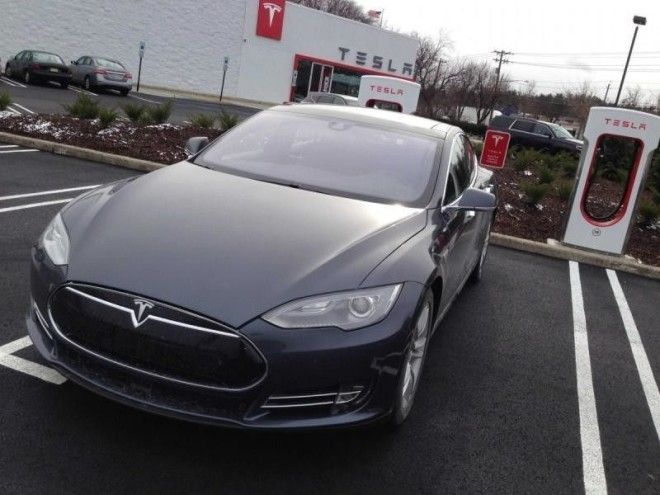
... and the dual-motor P85D. We even drove the S and the D on the same day.
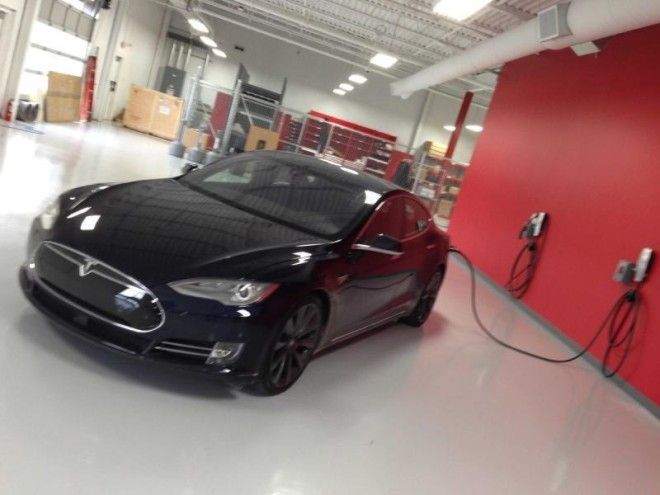
When "Ludicrous Mode" — 0 to 60 mph in a claimed 2.8 seconds — was introduced earlier this year, Tesla was kind enough to let us try out the new P90D version of the car. (See the underline on "P90D?" That means it's LUDICROUS!)
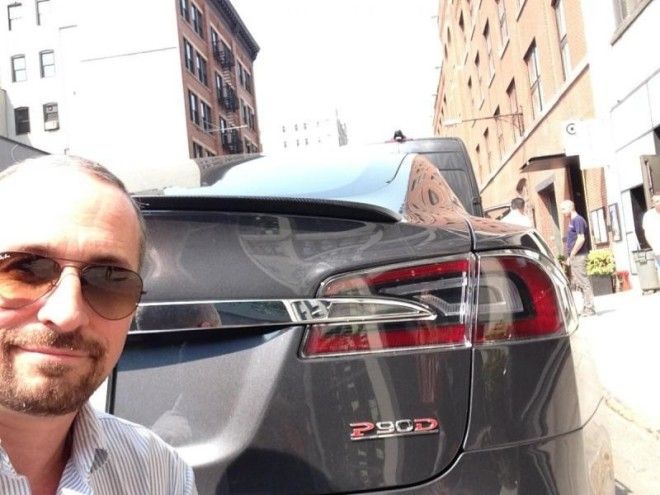
Then, in early October, we spent some more time behind the wheel of a P90D with Ludicrous Mode.
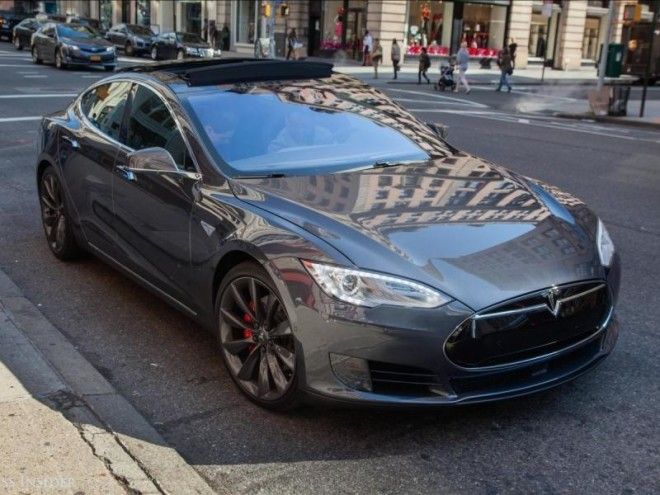
The P90D was our electric chariot for a glorious day of driving around the congested byways of New York City and the sprawling highways of New Jersey. But notice that our hands were firmly on the wheel.
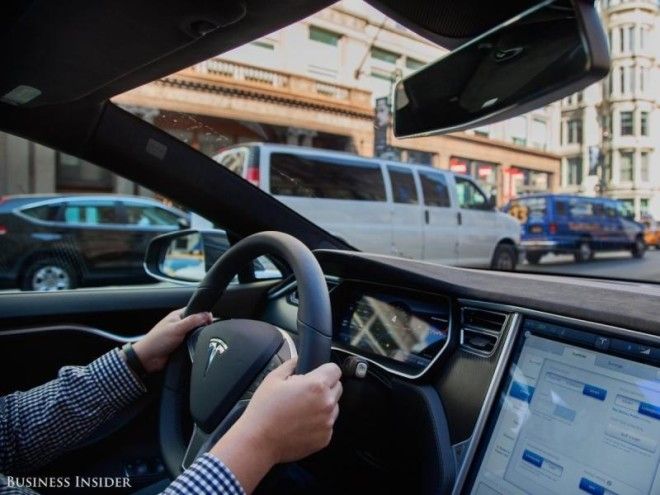
By sundown, we felt that we knew this car. We reluctantly returned it to Tesla.

A few days later, Tesla CEO Elon Musk made a much-anticipated announcement that changed our relationship with the P90D.
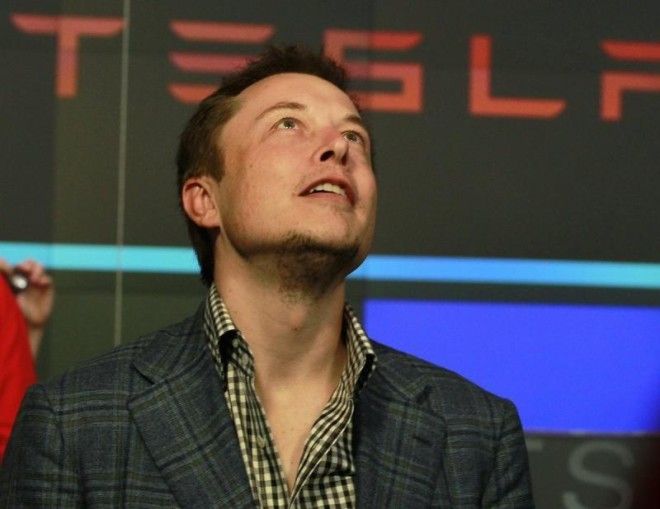
We headed back over to Tesla's Manhattan store to see what had happened. Literally overnight, the P90D had been equipped with the Version 7.0 update to its software.
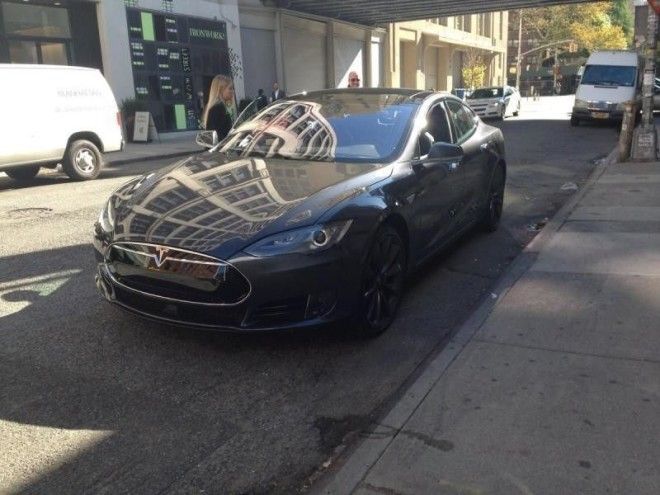
That meant that the Autopilot self-driving feature was activated on cars that were able to use it.
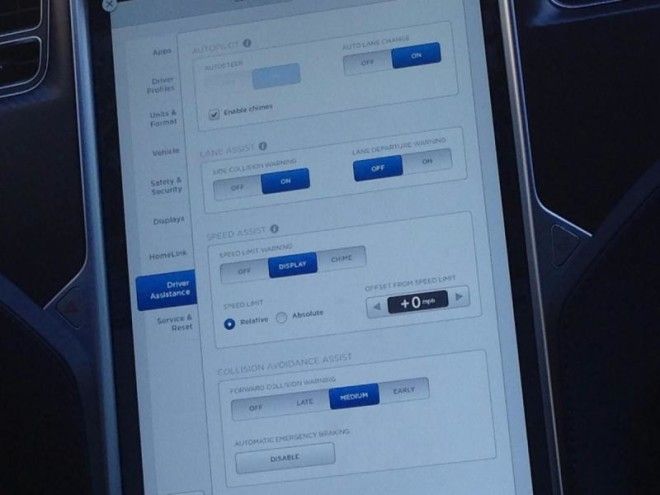
Autopilot works by using a series of 12 ultrasonic sensors, several cameras, a forward-looking radar, and GPS tracking to position the car relative to the other on-road traffic. The car can almost literally read the road.
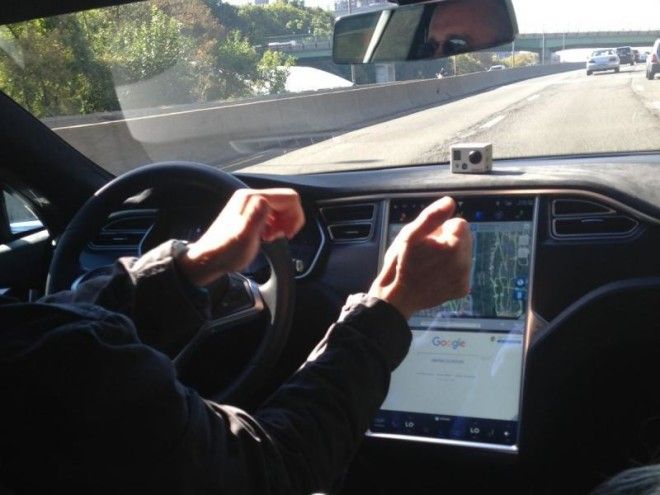
When available for use, the driver can activate Autopilot by pulling back twice on the cruise control stalk, on the steering column.
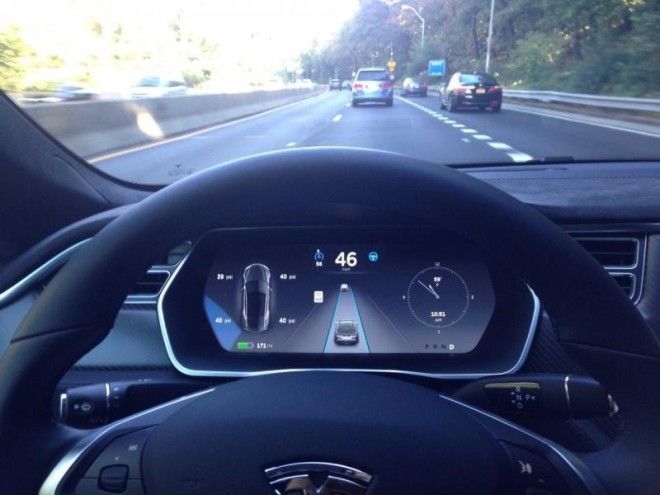
Autopilot has two parts. First, there's a smart cruise control that manages speed and distance between the Tesla and other cars on the road. Second is an auto-steering and auto-lane-change function. When active, both show up as blue symbols on either side of the speedometer. One symbol denotes cruise control; the other symbol tells you when you can ...

... OK, before we get to that, some technical detail. In addition to accelerating, stopping, and changing lanes, Autopilot can also help avoid side collisions. It can also automatically parallel park the car.

To sample Autopilot, we met up with a Tesla representative and took a lovely drive up the Hudson River on the West Side of Manhattan. Just look at that gorgeous concrete barrier!

THEN BEN TOOK HIS HANDS OFF THE WHEEL! To be honest, it was a bit nerve-wracking at first.
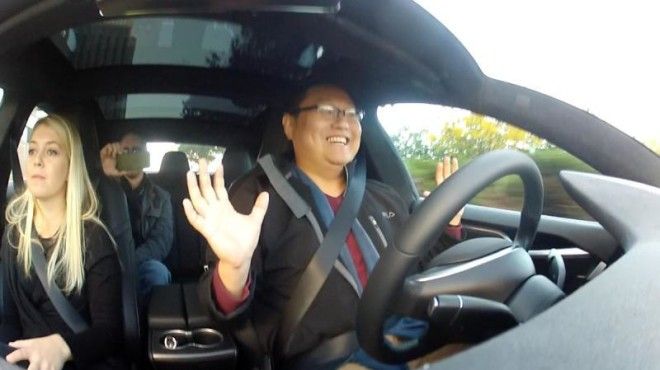
It felt incredibly bizarre to be in the driver's seat with my hands in my lap and my feet off the pedals.
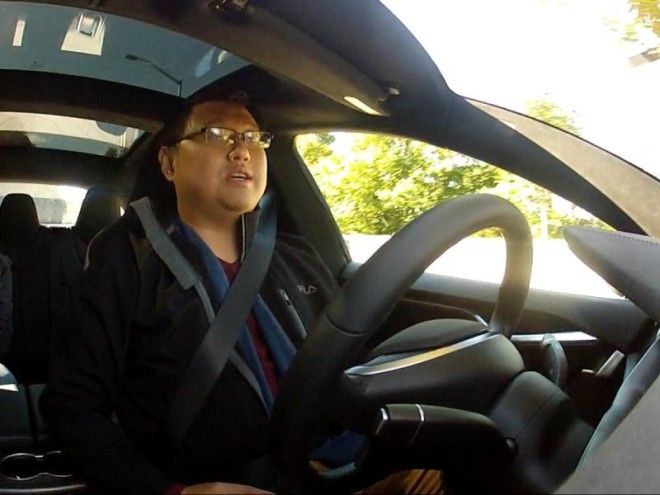
Matt had no issues giving up control.
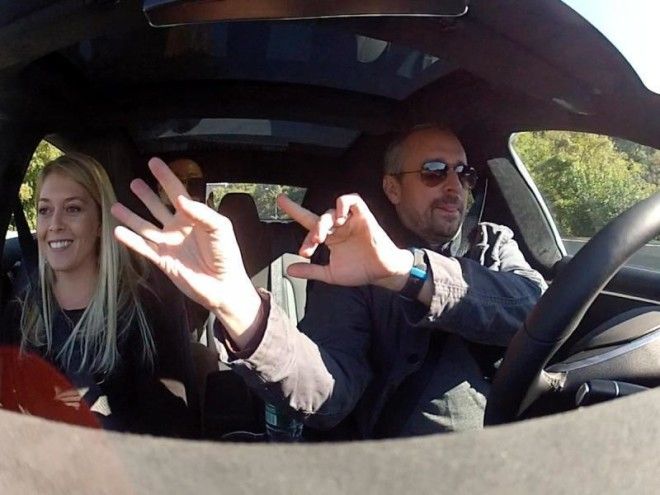
With Autopilot engaged, you can flick the turn signal and the car will automatically move into the neighboring lane.
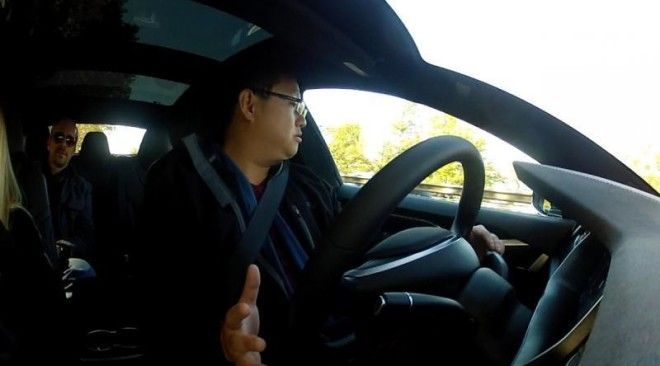
But Autopilot is not a truly autonomous system. You can't "set it and forget it" and text your friends or surf the web. And Tesla strongly objects to anyone who thinks they can do that.
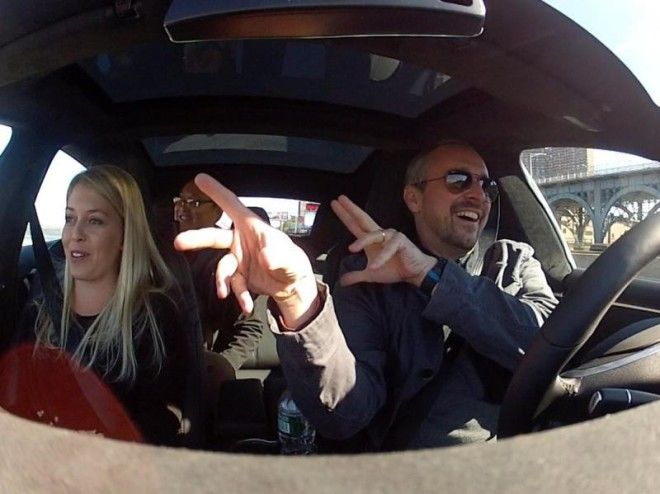
You still have to pay attention while driving. This is assisted driving — not even close to full autonomy.
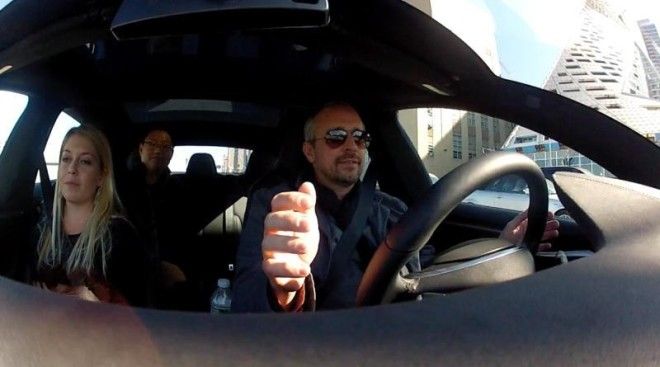
In fact, the car will send out an alert if it doesn't sense driver contact with the steering wheel for an extended period of time. Gentle pressure is all that's required.
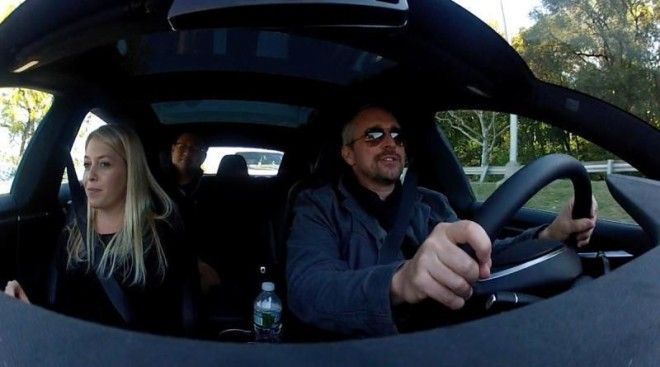
In gridlocked traffic, Autopilot can make driving a less stressful experience.
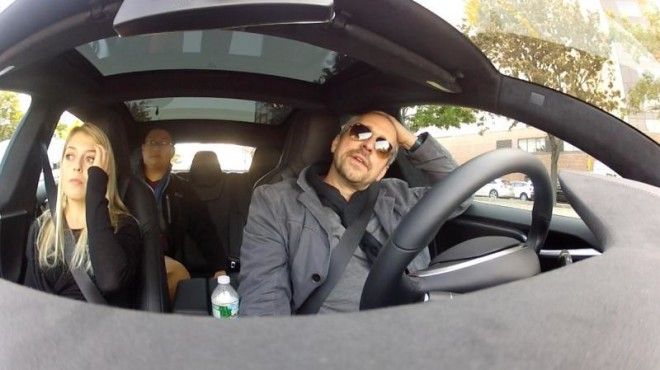
Tesla stresses that the Autopilot system is intended for highway use and the driver should regain control of the car upon exiting the highway.
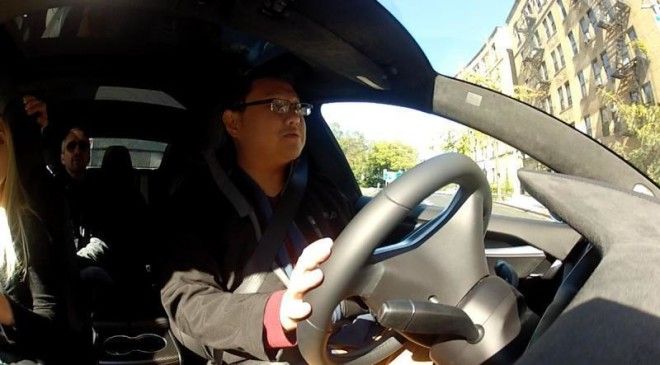
The Autopilot feature is available only on cars built after September 2014.
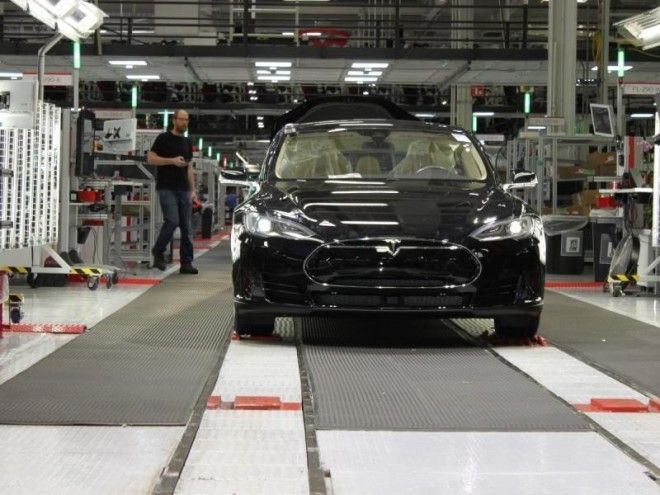
In addition to the Model S, it's also available on the Model X crossover.
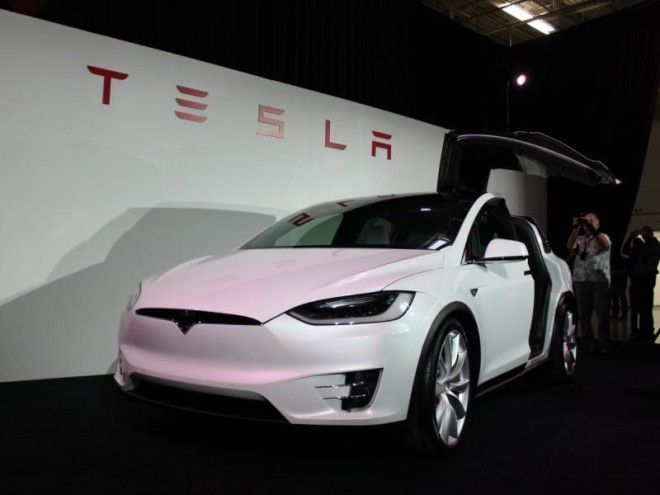
After Autopilot, we really can't wait to see what Tesla comes up with next for the P90D we thought we knew so well. The Model S has been continuously improved since its introduction. And it's pretty cool that you can go to sleep and wake up to find a car that has been significantly upgraded.
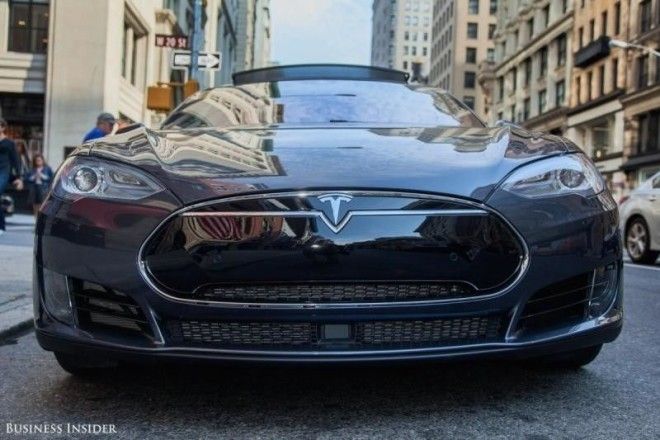
See the Tesla Autopilot in action:

